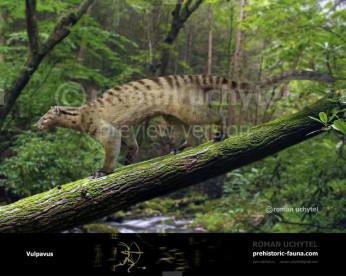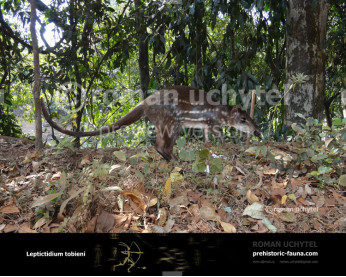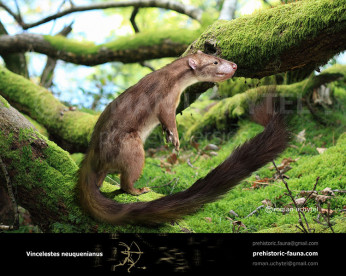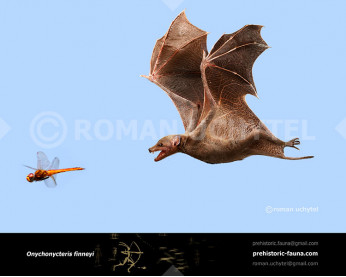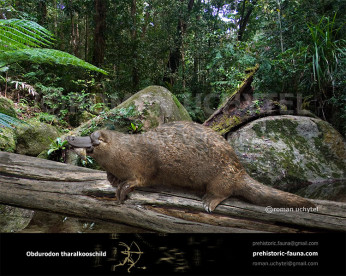Buxolestes
29062906
Buxolestes (†Buxolestes (Jaeger, 1970))
Order: †Cimolesta
Family: †Pantolestidae
Subfamily: †Pantolestinae
Size: 81 cm in length, 25 cm in height, ~10 kg of weight.
Time period: lived in Europe approximately ~48–40 million years ago in the Middle Eocene
Buxolestes is an extinct genus of semi-aquatic, non-placental eutherian, were otter-like water predators with a body length reaching about 46 centimetres and a tail about 35 centimetres long. Fossilized stomach contents confirm their semiaquatic freshwater habits. The anatomy of these archaic "insectivorous" mammals is known through well-preserved Middle Eocene specimens found at Messel in Germany. Their structure evidences a clear adaptation to a semiaquatic way of life. The forelimbs and hindlimbs are powerful and show strong claws. The tail is clearly fit for swimming. The skull is long, with large molars that appear to be adapted to a diet of molluscs with shells (freshwater clams and freshwater snails), but the predilection postulated from the dentition has not been confirmed.
Buxolestes belonging to the family Pantolestidae were part of the first placental evolutionary radiation during the Middle Eocene and found in the Bracklesham Group and Wittering Formation of England, at the Messel Pit in Germany and in Bouxwiller, France.
Оплата
У Вас є кілька зручних способів купівлі зображення: кредитна чи дебетова картка Visa, Mastercard, Maestro; PayPal або банківський переказ
Buxolestes (†Buxolestes (Jaeger, 1970))
Order: †Cimolesta
Family: †Pantolestidae
Subfamily: †Pantolestinae
Size: 81 cm in length, 25 cm in height, ~10 kg of weight.
Time period: lived in Europe approximately ~48–40 million years ago in the Middle Eocene
Buxolestes is an extinct genus of semi-aquatic, non-placental eutherian, were otter-like water predators with a body length reaching about 46 centimetres and a tail about 35 centimetres long. Fossilized stomach contents confirm their semiaquatic freshwater habits. The anatomy of these archaic "insectivorous" mammals is known through well-preserved Middle Eocene specimens found at Messel in Germany. Their structure evidences a clear adaptation to a semiaquatic way of life. The forelimbs and hindlimbs are powerful and show strong claws. The tail is clearly fit for swimming. The skull is long, with large molars that appear to be adapted to a diet of molluscs with shells (freshwater clams and freshwater snails), but the predilection postulated from the dentition has not been confirmed.
Buxolestes belonging to the family Pantolestidae were part of the first placental evolutionary radiation during the Middle Eocene and found in the Bracklesham Group and Wittering Formation of England, at the Messel Pit in Germany and in Bouxwiller, France.

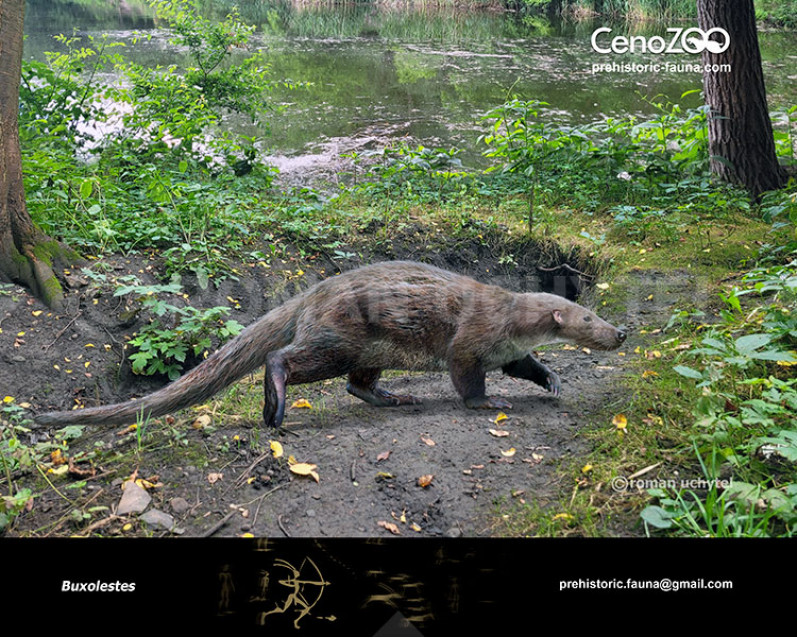
-797x638.jpg)

-70x56.jpg)
-346x277.jpg)
